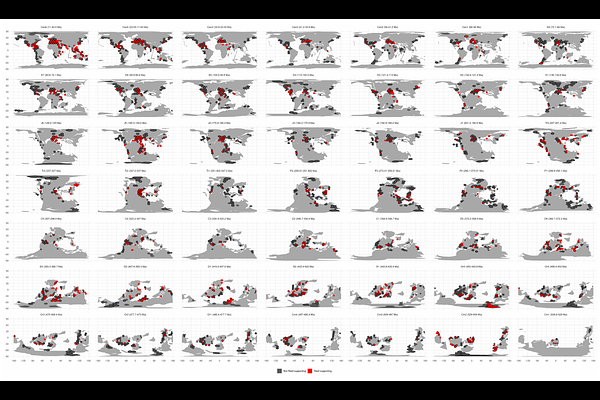Reefal regions were biodiversity hotspots throughout the Phanerozoic

Reefal regions were biodiversity hotspots throughout the Phanerozoic
Close, R. A.; Benson, R. B. J.; Kiessling, W.; Saupe, E. E.
AbstractReefs are important hotspots of marine biodiversity today, and acted as cradles of diversification in the geological past. However, we know little about how the diversity of reef-supporting regions varied through deep time, and how this differed from other regions. We quantified regional diversity patterns in reef-supporting and non-reef-supporting regions in the fossil record of Phanerozoic marine invertebrates. Diversity in reef-supporting regions is on average two- to three-fold higher than in non-reef-supporting regions, and has been remarkably stable over timescales of tens to hundreds of millions of years. This signal is present in both reefal and non-reefal facies within reef-supporting regions, suggesting that reefs enriched diversity in surrounding environments. Sepkoski's 'Modern Fauna', an assemblage of higher taxa that includes gastropods, bivalves and echinoids, has been a key component of reef-supporting regions since the Paleozoic, contrasting with its later rise to dominance in non-reef-supporting regions during the later Mesozoic-Cenozoic.